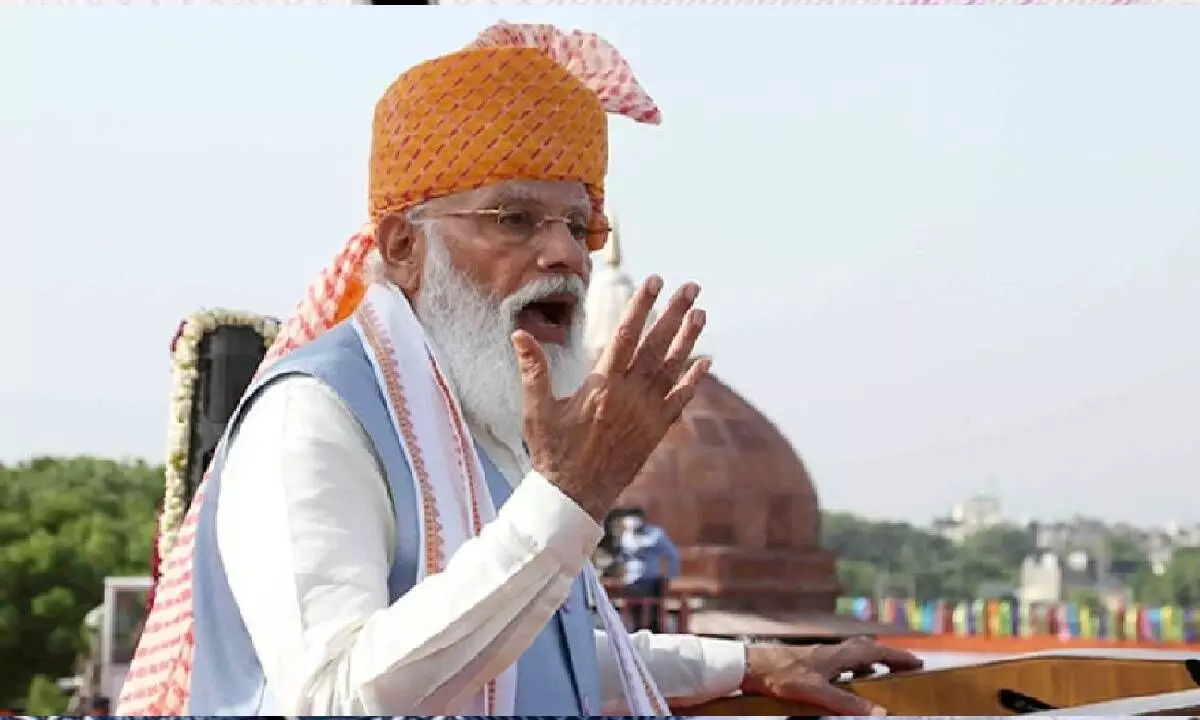Will India be a developed nation when it turns 100 in year 2047?
To become a high-income country, it needs grow at 7.6 per cent year after year till FY48
image for illustrative purpose

The year 2047 is back in focus. Prime Minister Narendra Modi, in its Independence Day address, said that he had an unwavering faith in India that it would turn into a developed nation by the time it celebrates 100 years of Independence in 2047. This is not the first time that the Prime Minister has mentioned this ambitious goal in his Independence Day speech
Speaking from the ramparts of Red Fort last year, he spoke about his avowed 'Mission 2047'. However, he was more emphatic this time. Modi even went on to cite three obstacles for India's dream to achieve the coveted developed nation status: corruption, dynastic politics and appeasement. He underlined the need for curbing these three evils on a war-footing if the country has to rise up the economic ranks.
But there are no well-established parameters to categorise a country as a developed nation. Of course, living standards of people obviously reflect the economic progress that a country has achieved. However, the International Monetary Fund (IMF) divided countries into two categories on economic parameters - advanced economies (AEs) and emerging markets, and developing economies (EMDEs). On the other hand, the World Bank has divided countries into four categories- low-income, lower-middle-income, upper-middle income and high-income countries.
Going by these classifications, advanced economies in the IMF list and high-income countries of the World Bank list can be considered as developed nations. That means that India should find a place in these two lists by 2047 if it has to be considered as a developed nation.
The Reserve Bank of India published an article titled 'India@100' in its July 2023 bulletin. The article has given growth projections that India has to achieve in order to figure in the elite nations clubs of both the world bodies.
As per IMF parameters, India's nominal GDP is required to grow nearly 15 times from $3.388 trillion in FY23 to $49.069 trillion in FY48 for the country to become an advanced economy. The country's per capita income (PCI) should also zoom from $2,450 in FY23 to $30,351 in 24 years, nearly a 13-fold jump. For this to happen, India's real GDP is required to consistently grow at 9.1 per cent annually, which is not an easy task.
According to the World Bank's benchmark, the country's GDP needs to reach $35,025 trillion by FY48, more than 10-fold jump from the current levels. The PCI needs to clock a 9-fold jump to $21,664 by FY48. To achieve this, the real GDP growth should be 7.6 per cent year after year. If everything goes well, it's not a Herculean task to consistently post such a growth rate over the next two-and-a-half decades.
However, I have my own yardstick to measure India's economic progress. In my view, we should consider India as a developed nation if our country, apart from achieving the desired GDP growth, is successful in having footpaths on every road where footpaths are required. True free left turns, speed lane and roads free of street vendors are other parameters that should be taken into consideration. So the path to India's journey towards the developed nation status should not go through its chaotic roads.
People spend a significant part of their lives on roads. That's the reason why I am talking about roads and discipline on the roads. For many, these things seem trivial. But they are a very important parameter to judge whether a country is developed or not. Therefore, the footpath model of economic index shall be a criterion when someone measures the economic progress of the country in 2047. I hope to see India score well on this index around that time.
Anyway, the talk of India becoming a developed nation is good. But the mute question is whether the country has the wherewithal to become one. Frankly speaking, the developed nation status isn't an unreachable goal for India if the country's leadership and citizens pursue it with an unwavering commitment.
If you have any doubts, read this. The British ruled India for nearly 200 years. Now, Rishi Sunak, a person of Indian origin, is ruling the United Kingdom. In the United States, Kamala D Harris, also a person of Indian origin, is the country's Vice-President. It should not come as a surprise if a person with Indian roots becomes the President of the US, the world's most powerful country, in the future.
Indians or those with Indian roots are also dominating the global corporate world with Satya Nadella as Executive Chairman and CEO of tech giant Microsoft, and Sunder Pichai as CEO of internet giant Google leading from the front. It's not an exaggeration to say that India's era has arrived. So, India becoming a developed nation is a foregone conclusion. If not by 2047, it will become one a few years later. The credit for it will obviously go to all those who have ruled India and lived in the country since Independence. Of course, Prime Minister Narendra Modi deserves appreciation for setting a clear cut goal for India to achieve the rare feat. But there is no guarantee that such developmental efforts bring in votes. That's for sure!

